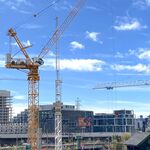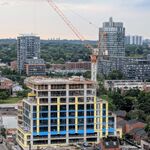Ed Drass
Active Member
Yes, adding express/Rocket service is a necessary interim step on some arterial routes (until an infrastructure-based transit solution is viable) and a more permanent solution on other arterial routes (Morningside, for instance).
Can you elaborate?
I'm not clear what upgrades to overcrowded surface routes are allowed if the anti-surface-transit-lanes approach prevails. If the only acceptable upgrade to better, more reliable service is subway, then where does that leave routes that reach their practicable mixed-traffic capacity -- but aren't on Ford's map?
Adding express branches (to the existing TTC routes that don't already have them) counts as a minor upgrade -- until you start talking queue jump lanes or heaven forfend, exclusive transit lanes. (Note: I would put Rockets in another category than "express" -- but both are subject to traffic conditions.)
Doesn't the anti-street-LRT approach tacitly include a ban on all street-level upgrades to transit? Subway desire is now holding back exclusive, protected bus lanes on Yonge north of Finch, just as it did the off-street busway to York U -- and the riders suffer in the interim. The 'interim' in some corridors could last decades.
Collectively, we seem to have been unable to spend political/economic capital on building sufficient subways over the last few decades, but neither have we spent much political capital on adding BRT to busy arterials -- even ones which can be widened. I see TC as the compromise, politically and economically, but compromises often fail to be adopted until the participants can no longer take the status quo. Obviously congestion is still tolerable enough that many are willing to wait for subways. That's too long a wait for too much of the city, in my view.
Some are attacking Transit City as anti-BRT, or too fascinated with steel wheels. In a place where the "subway is the only way to go" mentality has been implicit and now explicit, would a BRT-heavy network have even made it out the door? Where is the BRT-only faction, anyway? Nothing but steel-wheelers here...
Ed
Last edited:




